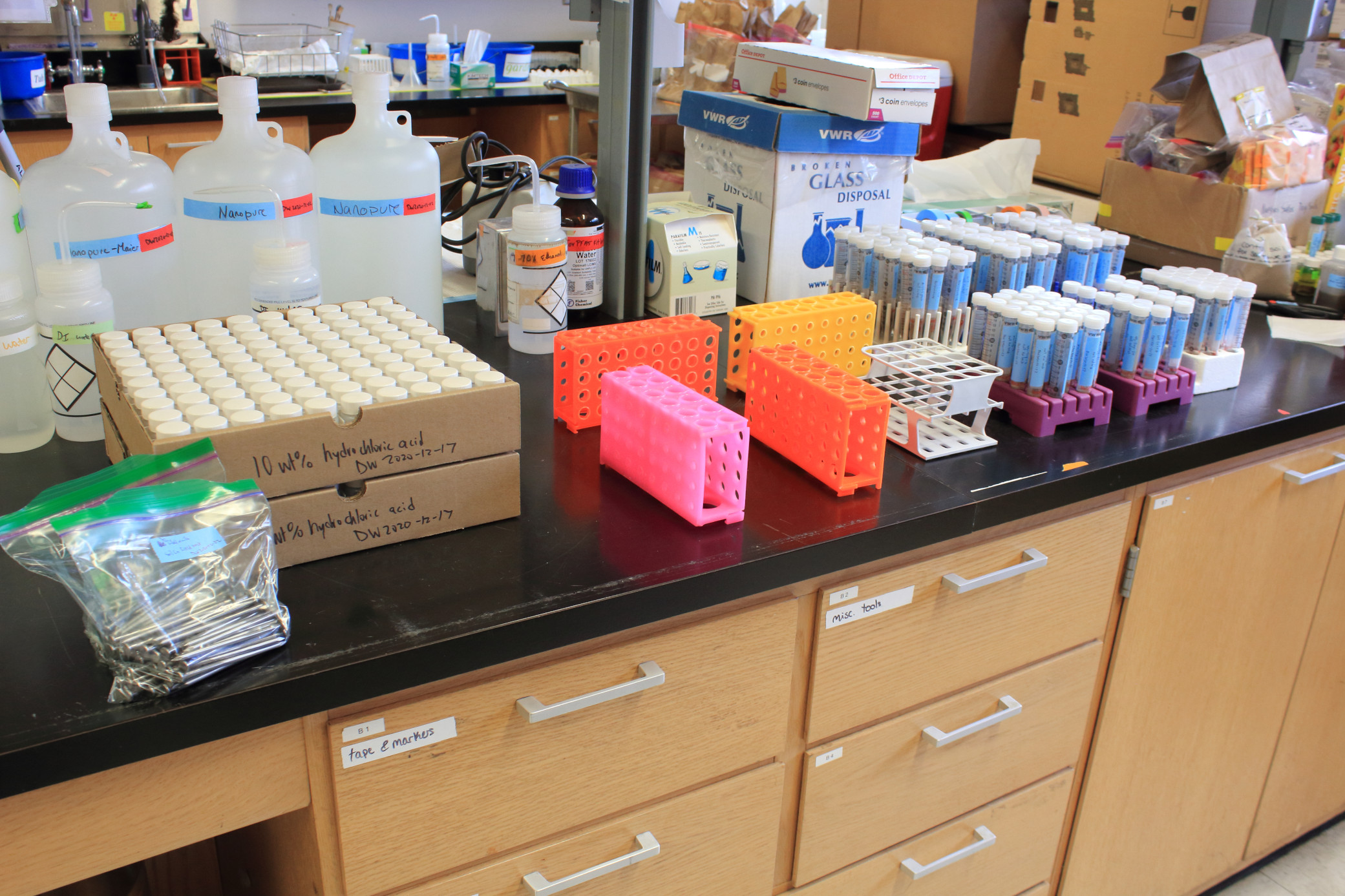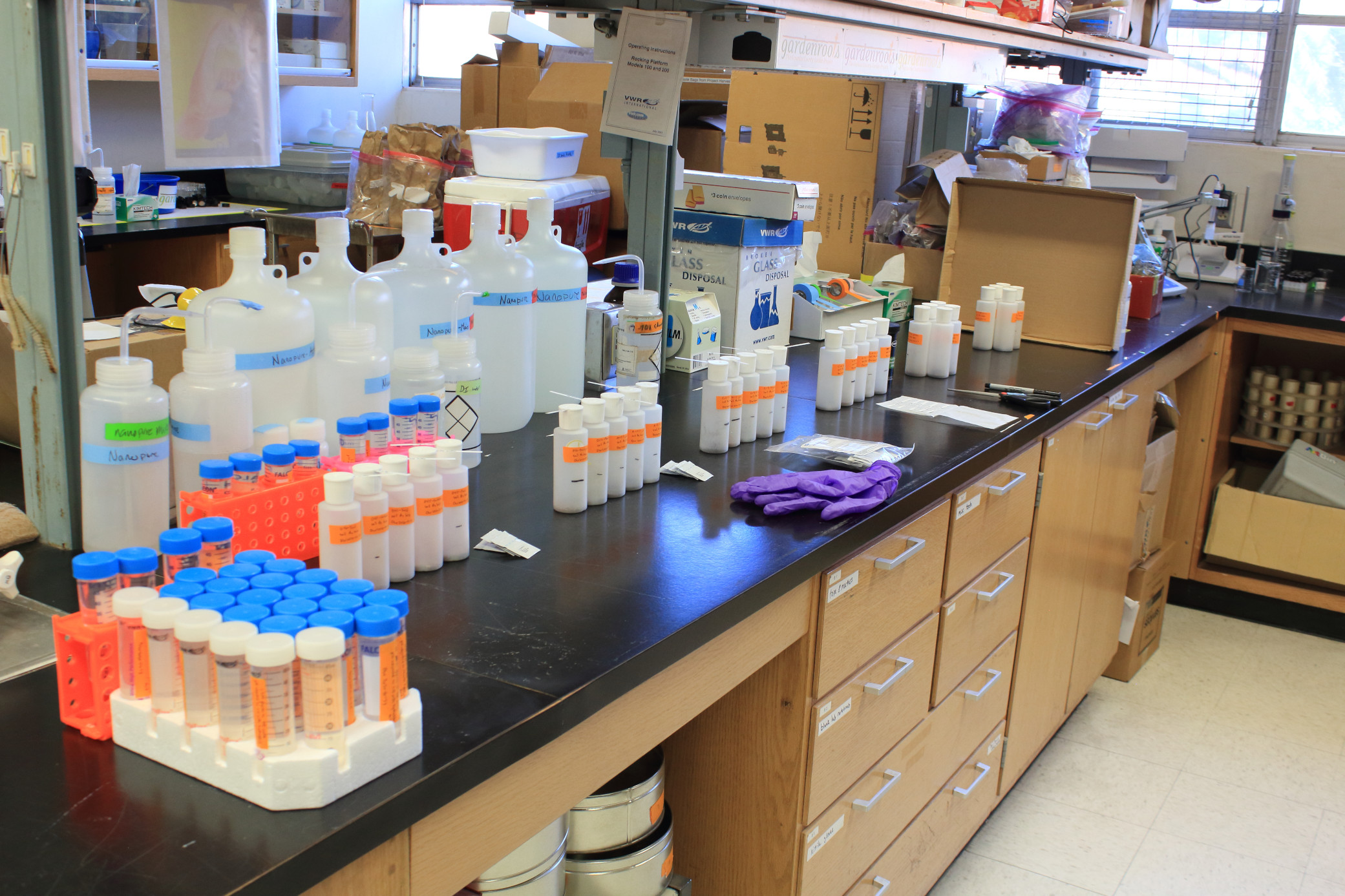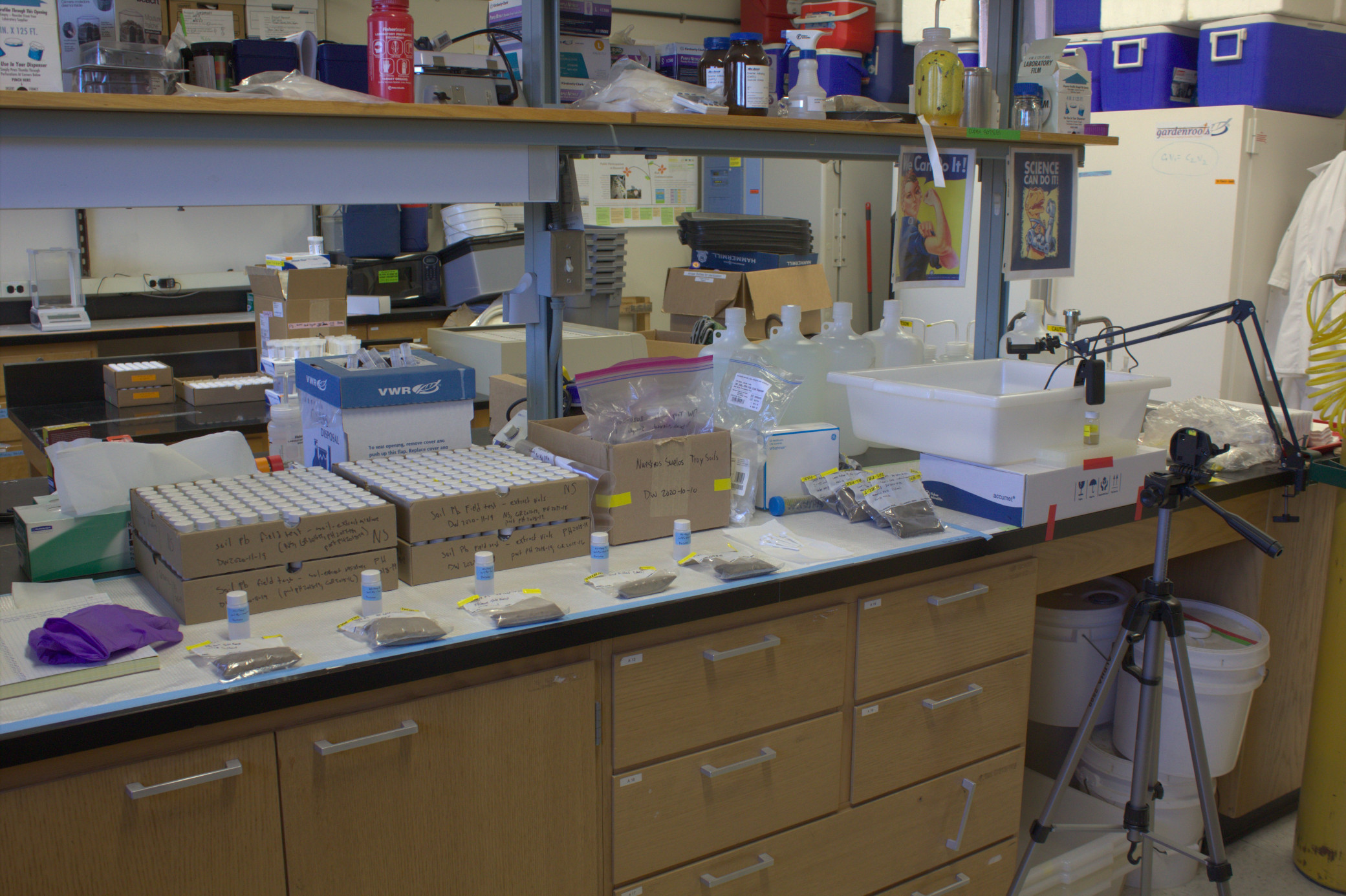Dan is continuing to work on the Community Soil Study Toolkit in the Ramírez-Andreotta laboratory with the field test for measuring copper in soil. This test is based on a method developed by our collaborators on the Nuestros Suelos project in Chile. Dan has completed measurements for the soil samples used with the soil lead and arsenic field tests performed earlier in the month: samples from public spaces in and around Troy, NY, and several samples archived in the Ramírez-Andreotta laboratory. He is now in the process of organizing and comparing the field results with the laboratory methods used to measure copper in soils. By comparing the field and laboratory results, a color scale can be established so that the color response can be quantified as the amount of copper in the soil.
The picture below shows Dan’s setup in the laboratory for conducting the copper field test: (1) soil samples are first added to vials and mixed with acidic solutions to extract copper from the soils; (2) after thirty minutes of the soil soaking in the acidic solution, a filed nail is added to the vial; (3) copper ions in solution undergo an electrochemical reduction-oxidation reaction and deposit on the nail; and (4) the intensity of the copper color on the nail corresponds to the amount of copper present in the soil.


